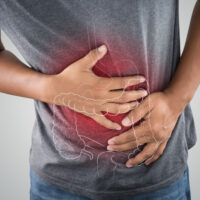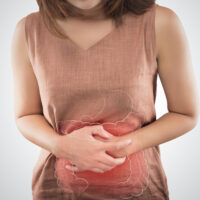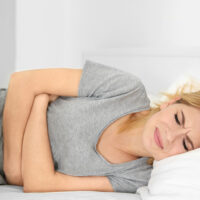Comprehensive Guide to Logistics Services
In today’s fast-paced and globalized world, logistics services play a vital role in ensuring that goods and services reach their intended destinations efficiently and safely. Shipping, warehousing, inventory management, transportation, delivery, and customer services are all components that fall under the umbrella of logistics. This article serves as a comprehensive guide to logistics services, designed to shed light on all aspects of the industry.

What Are Logistics Services?
Logistics services encompass the entire process of planning, implementing, and controlling the efficient and effective flow and storage of goods, services, and related information from the point of origin to the point of consumption. The overarching goal of logistics is to meet customer requirements at minimal costs while ensuring high standards of service.
Key Components of Logistics Services
1. Transportation
Transportation is the backbone of logistics services, involving the movement of goods from one location to another. This can include various modes of transport, such as:
– Trucking: Commonly used for short to medium distances.
– Rail: Suits large volumes over long distances within a continent.
– Air: Ideal for high-value or time-sensitive shipments.
– Ocean/Sea: Cost-effective for bulky, heavy, or non-urgent goods across international waters.
2. Warehousing
Warehousing involves the storing of goods in a designated facility. These facilities can be tailored to specific needs, handling everything from raw materials to finished products. Common warehousing options include:
– Public Warehousing: Available for companies on a flexible, rental basis.
– Private Warehousing: Owned and operated by companies for their specific storage needs.
– Bonded Warehousing: Stores imported goods before customs duties are paid.
3. Inventory Management
The primary function of inventory management is to maintain optimal stock levels to meet customer demand without incurring excess holding costs. This involves sophisticated systems for tracking stock levels, orders, sales, and deliveries.
4. Freight Forwarding
Freight forwarding involves coordinating and shipping merchandise on behalf of companies. Freight forwarders handle various logistics services like warehousing, shipping, and customs documentation while ensuring that goods reach their destinations timely and safely.
5. Customs Brokerage
Customs brokerage services are essential for companies engaged in international trade. Custom brokers are licensed professionals who help companies meet federal requirements governing imports and exports. These services include:
– Tariff Classification: Determining the correct code for importing goods.
– Documentation: Ensuring all required documents are accurately filled and submitted.
– Customs Clearance: Helping goods clear through customs regulations quickly.
6. Courier and Package Delivery
These services specialize in delivering smaller packages and parcels to consumers’ doorsteps. They provide last-mile delivery, ensuring the final leg of the journey for a package is swift and efficient.
Benefits of Effective Logistics Services
1. Cost Efficiency
Optimum logistics solutions can significantly reduce costs associated with transportation, warehousing, and inventory management. Businesses can also leverage economies of scale with well-planned logistics.
2. Customer Satisfaction
Timely and accurate deliveries enhance customer satisfaction and foster loyalty. Efficient logistics ensure that orders are fulfilled correctly and promptly, meeting customer expectations.
3. Competitive Advantage
A robust logistics network allows businesses to respond swiftly to market and demand changes, offering them a competitive edge over rivals less adept at logistics management.
4. Risk Management
Mitigating risks associated with transportation and storage of goods is crucial. Effective logistics services include risk management measures like insurance, contingency planning, and real-time monitoring.
5. Sustainability
Modern logistic solutions focus on sustainability by optimizing routes, reducing fuel consumption, and integrating eco-friendly practices, thereby minimizing the carbon footprint.
Challenges in Logistics Services
1. Fluctuating Fuel Prices
Volatile fuel prices directly impact freight costs, leading to unpredictability and potential increases in overall logistics expenses.
2. Regulatory Compliance
Compliance with complex international trade regulations and customs can pose formidable challenges, especially for businesses new to international markets.
3. Technological Integration
Effective logistics management often requires sophisticated software for tracking, analytics, and automation. Businesses might face hurdles in integrating new technologies into existing systems.
4. Security Risks
Logistics involves several security concerns, including theft, cargo damage, and cybersecurity threats. Companies need robust security protocols to protect goods and data.
Future Trends in Logistics Services
1. Automation and Robotics
The integration of automation and robotics in warehousing and transportation can significantly enhance efficiency and accuracy, minimizing human errors.
2. Artificial Intelligence (AI) and Machine Learning
AI and machine learning algorithms help predict demand, optimize routes, and manage inventory more effectively, offering smarter logistical solutions.
3. Blockchain Technology
Blockchain can enhance transparency and security in logistics, particularly in terms of transaction histories and documentation.
4. Sustainability Initiatives
With increasing focus on sustainability, eco-friendly practices such as electric vehicles for transportation, renewable energy-powered warehouses, and optimized supply chains are gaining traction.
5. Internet of Things (IoT)
IoT devices provide real-time data on the location and condition of goods, offering better tracking and greater regulatory compliance.
Logistics services are a critical component of supply chain management, providing essential functions that ensure the seamless flow of goods from origin to destination. With advancements in technology and a focus on efficiency and sustainability, the logistics landscape continues to evolve, presenting both challenges and opportunities. Understanding the core components, benefits, and future trends of logistics services enables businesses to stay competitive and deliver superior customer experiences.





